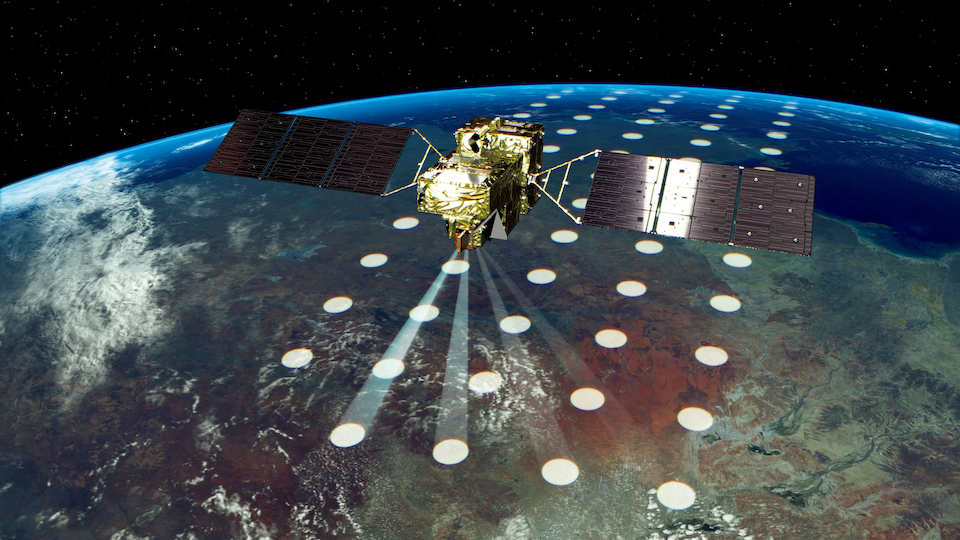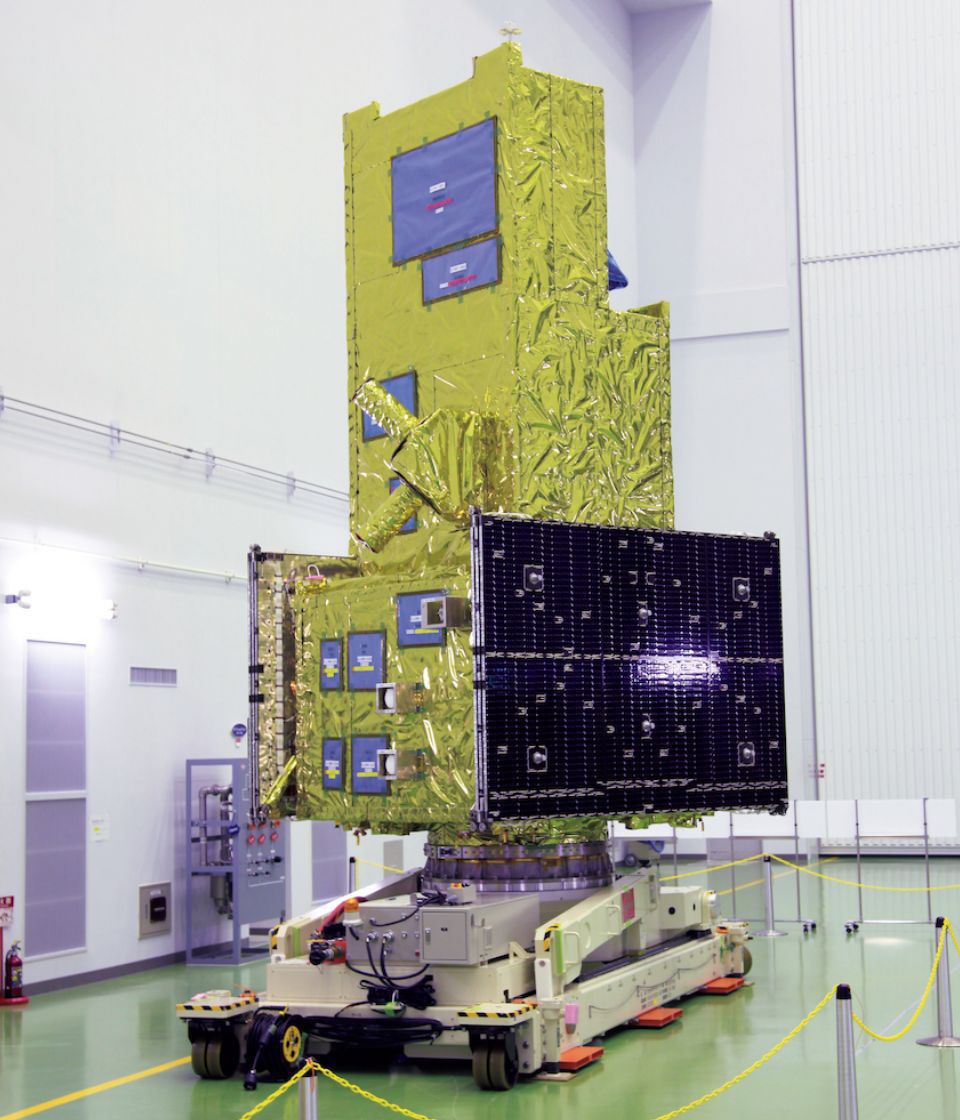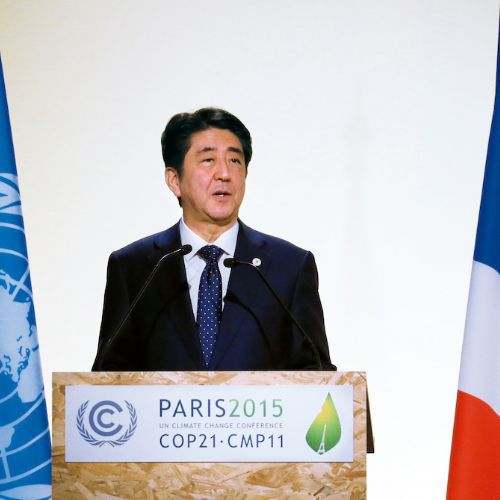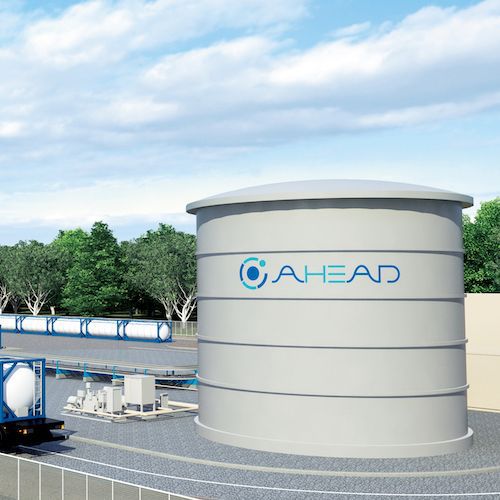GOSAT (Ibuki) is the world’s first satellite for observing greenhouse gases. To help achieve SDGs, windows on global warming have been opened in outer space.

660 km above the Earth, GOSAT completes an orbit in approximately 100 minutes, measuring greenhouse gases at about 56,000 points on the surface.
On October 29, 2018, the Japan Aerospace Exploration Agency (JAXA) launched the second Greenhouse Gases Observing Satellite (GOSAT-2) from its Tanegashima Space Center. The original GOSAT, launched in January 2009, was the world’s first satellite for making observations from outer space of greenhouse gases such as CO2 and CH4, which are major causes of global warming. The development project started in 1997, pursuant to the Kyoto Protocol that specified greenhouse gas reduction targets for each nation. The nickname “Ibuki,” meaning “breath” in Japanese, reflects the satellite’s mission to monitor the Earth’s breath (i.e, the various gases circulating in the atmosphere).

The next-generation GOSAT-2 will also estimate the concentrations of PM 2.5 (fine particulate matter) and black carbon in the atmosphere, thus helping to monitoring air pollution.
Previously, greenhouse gases had only been measured by surface stations and aircraft, and the limited number of measurement points made global-wide observation of greenhouse gases densities difficult. In contrast, GOSAT collects data across most of the globe accurately and uniformly, because measurements are taken by a single sensor from outer space. These measurements are then supplied for free to many countries as basic data for studying the actual state of our planet. These data could also help to monitor the actual greenhouse gas emissions of each country, based on the Paris Agreement, which is the international framework for addressing global warming issues.
At first, many scientists and other experts were skeptical about the idea of taking measurements from outer space. But following GOSAT’s launch, they increasingly accepted the importance of monitoring the atmosphere from space as each new batch of data was analyzed. One after another, the U.S., Europe, China, and others launched their own observation satellites. All of these data are presently being made available to all scientists researching climate change and related topics.
The next-generation observation satellite, GOSAT-2, measures CO2 with greater precision. Additions to the measurement wavelength region now make it possible to measure concentrations of CO. Akiko Suzuki, director of public relations at JAXA, explains, “To gain an accurate understanding of how the Earth is changing, it’s vital to collect this kind of observational data under identical conditions, to accumulate long-term, consistently reliable data. In this sense, the original GOSAT, which has taken continuous measurements for almost 10 years, has been a great success. With the cooperation of other countries, our goal is to continue to accumulate consistent measurements.”
For the time being, both GOSAT and GOSAT-2 will continue to make observations assuming a two- satellite system. The data they obtain will be useful as scientific evidence for preserving the sustainability of our planet. Suzuki adds, “Our technology at JAXA keeps and use evolving through the development of observation satellites that get better at doing this. Going forward, we hope that we can contribute to a better world for all.”

Akiko Suzuki is director of public relations at the Japan Aerospace Exploration Agency(JAXA). She has been active for many years in promoting the full utilization of data obtained by the agency’s satellites, such as GOSAT and the Advanced Land Observing Satellite (ALOS), and also in the capacity of coordinator for international cooperative projects.





























